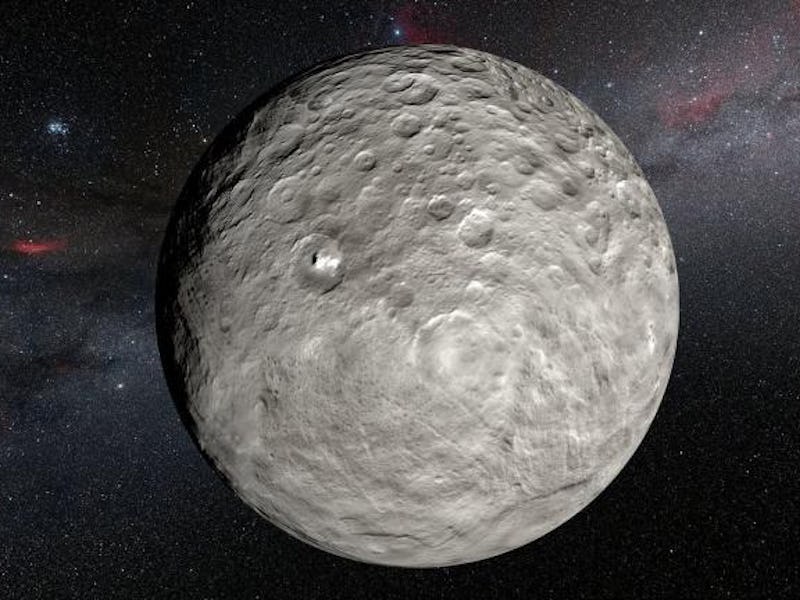Mysterious Bright Spots on Water-Rich Ceres Pose Astronomical Quandary
What in the name of Ceres?

Ceres, the water-rich dwarf planet located in the asteroid belt between Mars and Jupiter, is even more active than we thought. Astronomers in Chile have identified mysterious bright spots on the planet that give off a different amount of light every day. NASA’s Dawn spacecraft, which is currently in orbit around the dwarf planet, originally spotted the unusual glowing areas.
“As soon as the Dawn spacecraft revealed the mysterious bright spots on the surface of Ceres, I immediately thought of the possible measurable effects from Earth. As Ceres rotates, the spots approach the Earth and then recede again, which affects the spectrum of the reflected sunlight arriving at Earth,” said Paolo Molaro, the study’s lead author from the INAF-Trieste Astronomical Observato.
The team found that the bright spots were more intense when the planet was facing the sun, so they figured that sunlight was causing volatile substances to form large reflective plumes, which then evaporated at night.
The only problem with this hypothesis was that every day the team tracked the bright spots, they were emitting different amounts of light. The “random” patterns indicate other as-yet unknown forces may be influencing the plumes, or Molaro’s conclusion is wrong altogether.
“The result was a surprise,” said co-author Antonino Lanza from the INAF–Catania Astrophysical Observatory. “We did find the expected changes to the spectrum from the rotation of Ceres, but with considerable other variations from night to night.”
The find was an unexpected coup for the Dawn spacecraft, which has been orbiting Ceres for about a year now. The original goal of the mission was to map the dwarf planet and try to understand what role the all-important water plays in its ecosystem. Nobody thinks the bright spots are related to water. But for these astronomers to be obsessing over them while water flows nearby should give you a good sense of just how weird they are. So what in the name of Ceres could they be?